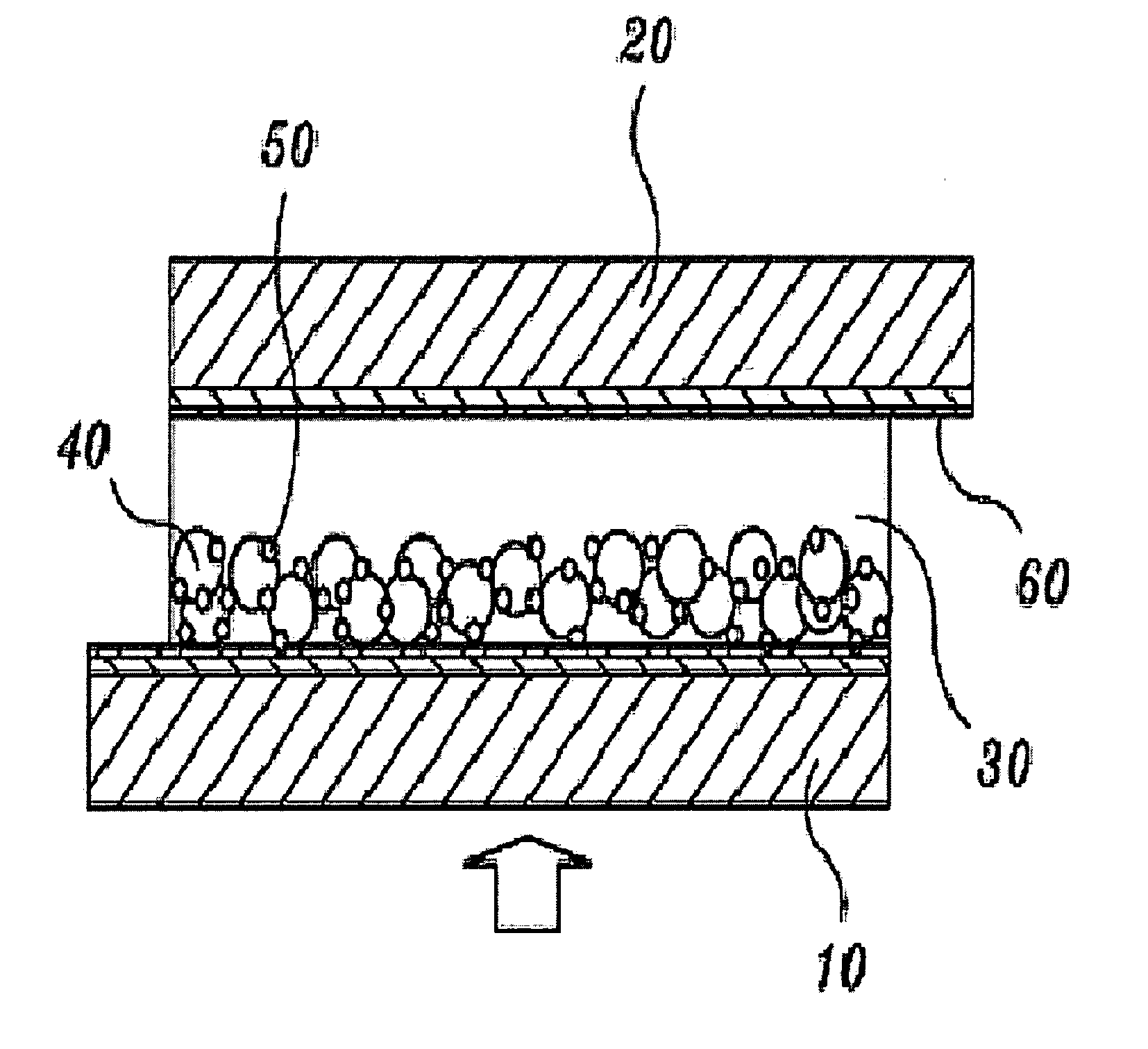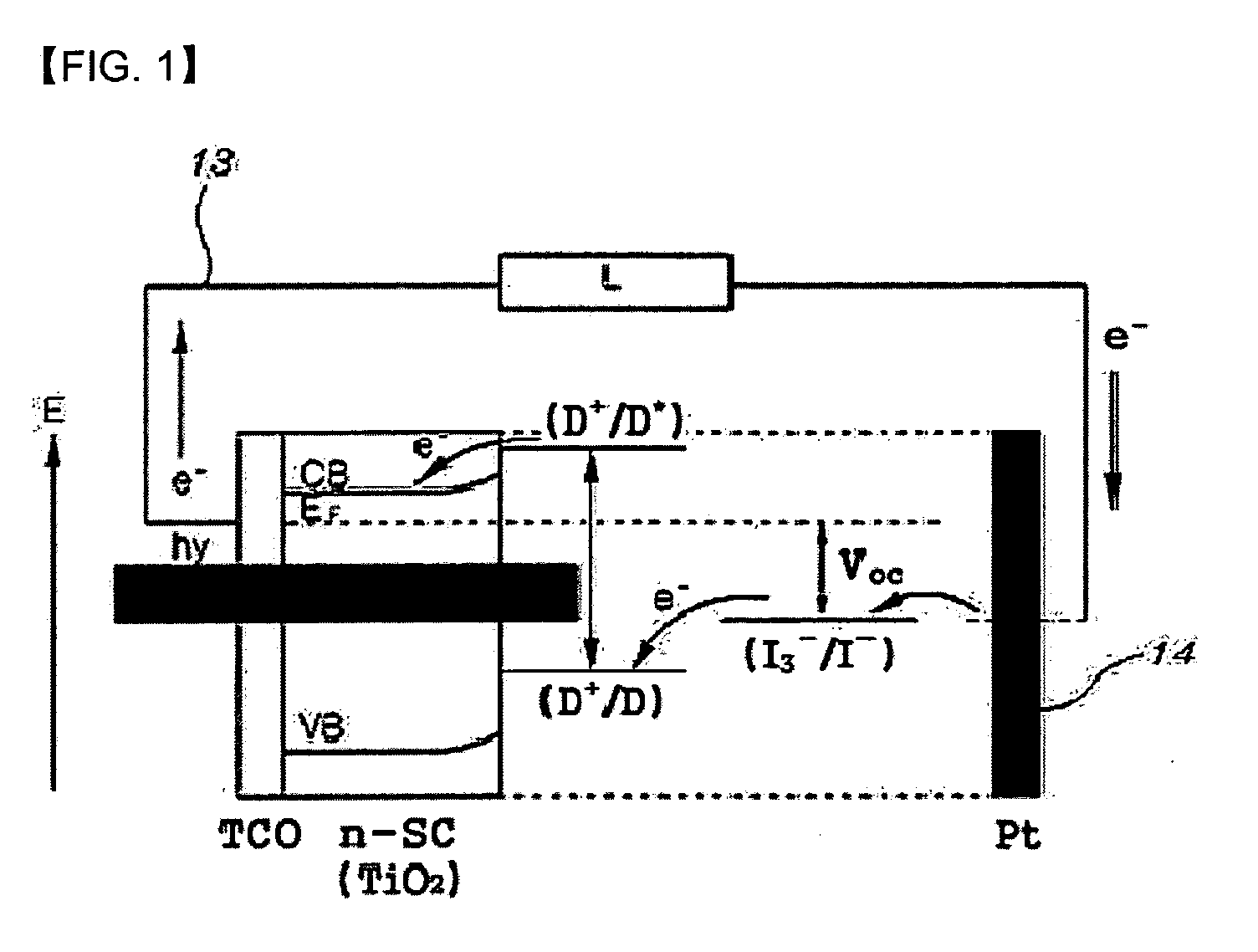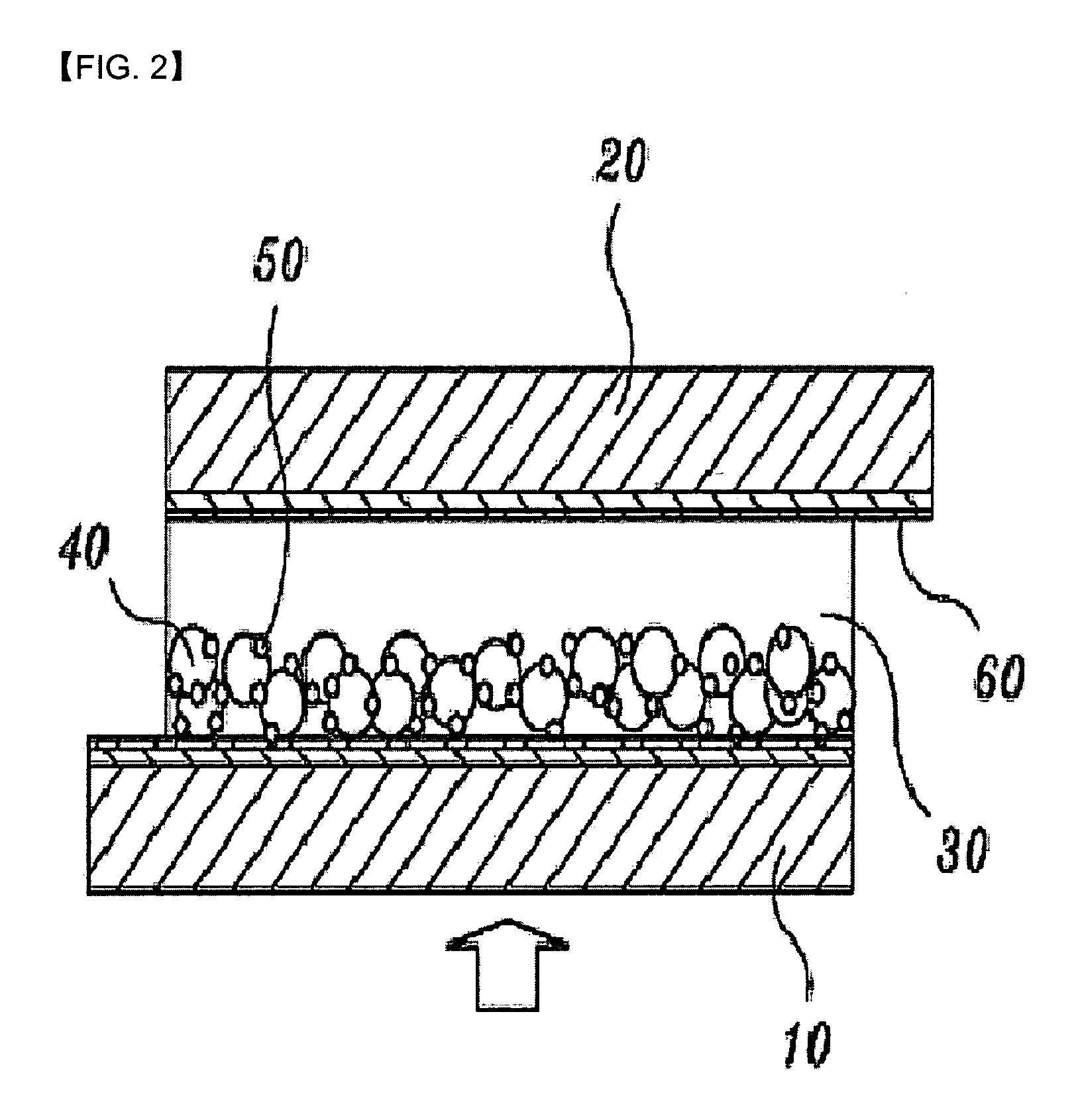Highly efficient counter electrode for dye-sensitized solar cell and method of producing the same
- Summary
- Abstract
- Description
- Claims
- Application Information
AI Technical Summary
Benefits of technology
Problems solved by technology
Method used
Image
Examples
example 1
[0094] Production of a Counter Electrode, in which a Conductive Polymer is Applied on the Counter Electrode, Coated with a Base Platinum Layer, to Form an Electron Transfer Layer
[0095] After the predetermined amount of H2PtCl6 solution (0.05 M in isopropanol) was dropped on a conductive substrate, the resulting substrate was subjected to a spin coating process (1st: 1000 rpm, 10 sec; and 2nd: 2000 rpm, 40 sec), heated from room temperature to 450° C. for 2 hours, heat treated at 450° C. for 20 min, and cooled to room temperature for 8 hours. Thereby, the application of a base platinum layer on the conductive substrate was completed. Hereinafter, a procedure of applying the base platinum layer on the conductive substrate will be conducted in the same manner. After the predetermined amount of conductive polymer solution dissolved in an organic solvent was dropped on a counter electrode, on which the base platinum layer is applied, a spin coating process (1st: 1000 rpm, 10 sec; and 2n...
example 2
[0096] Production of a Counter Electrode, in which Platinum Nanoparticles are Electrochemically Applied on the Counter Electrode, Coated with a Base Platinum Layer, to Form an Electron Transfer Layer
[0097] The two counter electrodes coated with the base platinum layer were positioned in an electrophoretic cell. In this regard, a distance between the two electrodes was maintained at 1 mm. The predetermined amount of platinum nanoparticles having a particle size of about 500 nm or less was put into a mixed solution of acetone / ethanol (1 / 1, v / v), and subjected to an ultrasonic treatment to be completely dispersed. A predetermined voltage was applied while the counter electrodes were completely dipped in the platinum nanoparticle solution, thereby inducing electrophoresis of the platinum particles. After the platinum nanoparticles were applied on the counter electrodes, they were heat treated (at 450° C. for 20 min) to improve the contact between the platinum nanoparticles.
example 3
[0098] Production of a Counter Electrode, in which a Platinum Nanoparticle Layer is Electrochemically Applied on the Counter Electrode, Coated with a Base Platinum Layer, and a Conductive Polymer Layer is then Laminated on the Resulting Counter Electrode to Form an Electron Transfer Layer
[0099] A counter electrode, on which platinum nanoparticles were applied, was produced according to the same procedure as in example 2, and a conductive polymer was applied on the resulting counter electrode using a spin coating process and then subjected to a doping process according to the same procedure as example 1.
PUM
| Property | Measurement | Unit |
|---|---|---|
| Particle size | aaaaa | aaaaa |
| Flexibility | aaaaa | aaaaa |
| Ratio | aaaaa | aaaaa |
Abstract
Description
Claims
Application Information
 Login to View More
Login to View More - R&D
- Intellectual Property
- Life Sciences
- Materials
- Tech Scout
- Unparalleled Data Quality
- Higher Quality Content
- 60% Fewer Hallucinations
Browse by: Latest US Patents, China's latest patents, Technical Efficacy Thesaurus, Application Domain, Technology Topic, Popular Technical Reports.
© 2025 PatSnap. All rights reserved.Legal|Privacy policy|Modern Slavery Act Transparency Statement|Sitemap|About US| Contact US: help@patsnap.com



